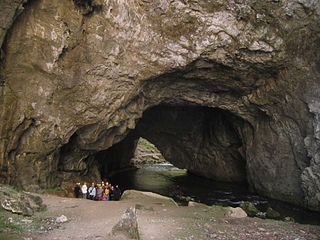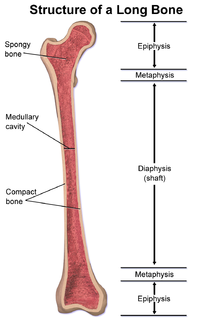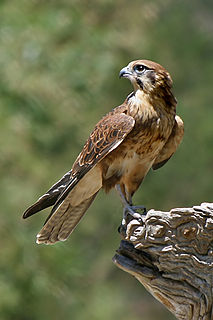
Falcons are birds of prey in the genus Falco, which includes about 40 species. Falcons are widely distributed on all continents of the world except Antarctica, though closely related raptors did occur there in the Eocene.
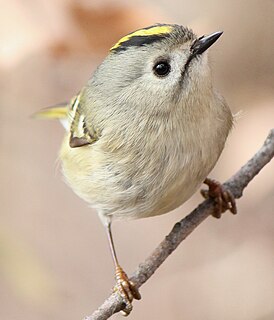
A kinglet, or crest, is a small bird in a group that is sometimes included in the Old World warblers, but is frequently placed in its own family, Regulidae, because of resemblance to titmice. "Regulidae" is derived from the Latin word regulus for "petty king" or prince, and refers to the coloured crowns of adult birds. This family has representatives in North America and Eurasia. There are seven species in this family; one, the Madeira firecrest, Regulus madeirensis, was only recently split from common firecrest as a separate species. One species, the ruby-crowned kinglet, differs sufficiently in its voice and plumage to occasionally be afforded its own genus, Corthylio.

The crossbill is a genus, Loxia, of birds in the finch family (Fringillidae), with six species. These birds are characterised by the mandibles with crossed tips, which gives the group its English name. Adult males tend to be red or orange in colour, and females green or yellow, but there is much variation.
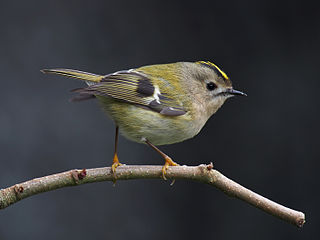
The goldcrest is a very small passerine bird in the kinglet family. Its colourful golden crest feathers gives rise to its English and scientific names, and possibly to it’s being called the "king of the birds" in European folklore. The scientific name, R. regulus, means king or knight. Several subspecies are recognised across the very large distribution range that includes much of Eurasia and the islands of Macaronesia and Iceland. Birds from the north and east of its breeding range migrate to winter further south.
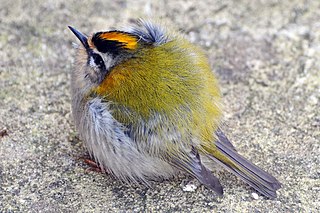
The common firecrest also known as the firecrest, is a very small passerine bird in the kinglet family. It breeds in most of temperate Europe and northwestern Africa, and is partially migratory, with birds from central Europe wintering to the south and west of their breeding range. Firecrests in the Balearic Islands and north Africa are widely recognised as a separate subspecies, but the population on Madeira, previously also treated as a subspecies, is now treated as a distinct species, the Madeira firecrest, Regulus madeirensis. A fossil ancestor of the firecrest has been identified from a single wing bone.

Gyps is a genus of Old World vultures in the bird family Accipitridae. Created by Marie Jules César Savigny in 1809, it contains the following extant species:

The bird genus Eremophila comprises the two horned larks.
Lullula is the genus of woodlarks, songbirds in the family Alaudidae. There is only one remaining extant species, the woodlark which is found in Europe, the mountains of northern Africa, the Middle East and western Asia. The remainder are known only from the fossil record.

The small bird genus Geronticus belongs to the ibis subfamily (Threskiornithinae). Its name is derived from the Greek gérontos in reference to the bald head of these dark-plumaged birds; in English they are called bald ibises.

Lagopus is a small genus of birds in the grouse subfamily commonly known as ptarmigans. The genus contains three living species with numerous described subspecies, all living in tundra or cold upland areas.

Melanocorypha is a small genus of birds in the lark family. The current genus name, Melanocorypha is from Ancient Greek melas, "black", and koruphos a term used by ancient writer for a now unknown bird, but here confused with korudos, "lark".

Pavo is a genus of two species in the pheasant family. The two species, along with the Congo peacock, are known as peafowl.

Varshets is a spa town in Montana Province, northwestern Bulgaria. It is the administrative centre of the homonymous Varshets Municipality. As of December 2009, its population is 6,538. The town is located on the northern slopes of the western part of the Balkan mountains in the small valley of the Botunya River, at 43°12′N23°17′E, 359 metres above sea level. One of the oldest and most popular resorts in northern Bulgaria, it is known for its curative mineral springs, mild mountain climate, natural environment and a large park. The town's tourist infrastructure includes two spa centres, a polyclinic, several rest houses, hotels and also many private lodgings. Varshets has an art gallery, a municipal museum and an Eastern Orthodox church dedicated to Saint George.

Galerida is a genus of birds in the family Alaudidae. The current scientific name is derived from Latin. Galerida was the name for a lark with a crest, from galerum, "cap". The name Galerida is synonymous with the earlier genus names Calendula, Heliocorys and Ptilocorys.
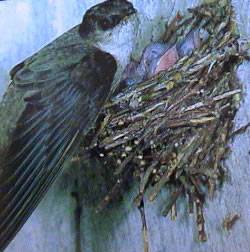
Chaetura is a genus of needletail swifts found in the Americas. Although they resemble swallows, the two are not at all closely related; this is instead a result of convergent evolution. Some members of Chaetura are long-distance migrants, while others are year-round residents.
Paleontology or palaeontology is the study of prehistoric life forms on Earth through the examination of plant and animal fossils. This includes the study of body fossils, tracks (ichnites), burrows, cast-off parts, fossilised feces (coprolites), palynomorphs and chemical residues. Because humans have encountered fossils for millennia, paleontology has a long history both before and after becoming formalized as a science. This article records significant discoveries and events related to paleontology that occurred or were published in the year 1995.
Paleontology or palaeontology is the study of prehistoric life forms on Earth through the examination of plant and animal fossils. This includes the study of body fossils, tracks (ichnites), burrows, cast-off parts, fossilised feces (coprolites), palynomorphs and chemical residues. Because humans have encountered fossils for millennia, paleontology has a long history both before and after becoming formalized as a science. This article records significant discoveries and events related to paleontology that occurred or were published in the year 1999.

The Trias greenfinch is an extinct passerine from the family of finches (Fringillidae). The fossil remains were unearthed in the Cuevas de los Murciélagos near San Andrés y Sauces in the north of La Palma, Canary Islands. The species epithet commemorates Spanish palaeontologist Miquel Trías who collected the holotype together with Josep Antoni Alcover in July 1985.

Yevgeny Nikolayevich Kurochkin was a Russian paleornithologist at the Paleontological Institute of the Russian Academy of Sciences. He served as President of the Menzbier Ornithological Society.
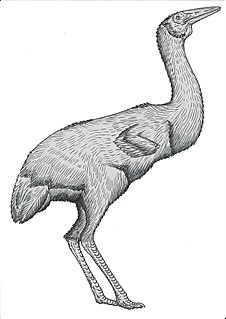
Eogruidae is a family of large, flightless birds that occurred across Eurasia from the Eocene to Pliocene epochs. Related to modern cranes, limpkins and trumpeters, these birds converged strongly with ostriches due to similar speciations to cursoriality, even reducing their number of toes to two in some taxa. It has been suggested that competition from true ostriches has caused the extinction of these birds, though this has never been formally tested and several ostrich taxa do occur in the late Cenozoic of Asia and some species do occur in areas where ostrich fossils have also been found.

